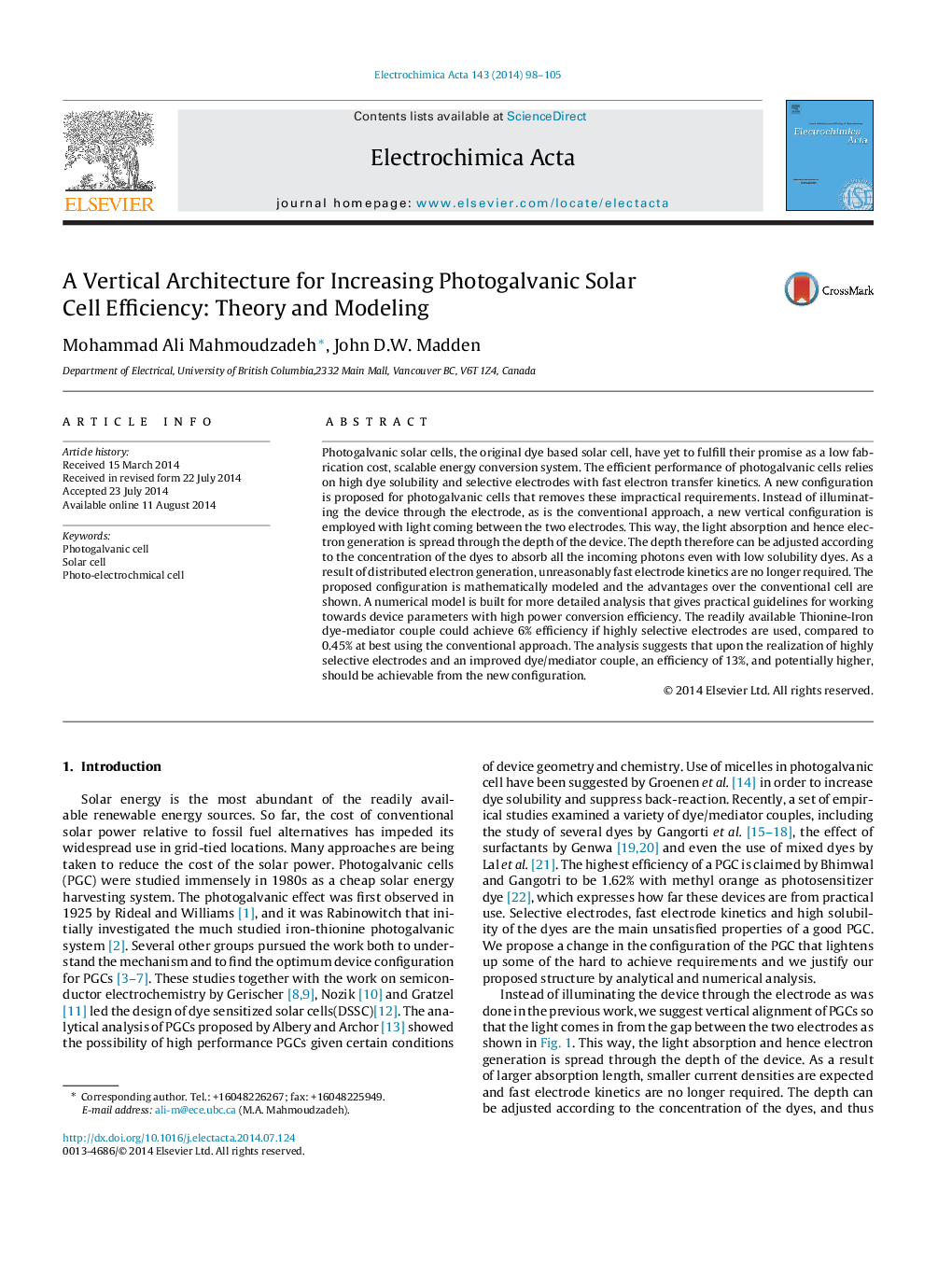| کد مقاله | کد نشریه | سال انتشار | مقاله انگلیسی | نسخه تمام متن |
|---|---|---|---|---|
| 185142 | 459591 | 2014 | 8 صفحه PDF | دانلود رایگان |
• A new vertical configuration is proposed for photogalvanic cells.
• The proposed vertical photogalvanic cell is mathematically modeled.
• A numerical model is built for more detailed analysis.
• Device parameters for high power conversion efficiency are determined.
• Efficiencies of 13% can be expected from the vertical photogalvanic cell.
Photogalvanic solar cells, the original dye based solar cell, have yet to fulfill their promise as a low fabrication cost, scalable energy conversion system. The efficient performance of photogalvanic cells relies on high dye solubility and selective electrodes with fast electron transfer kinetics. A new configuration is proposed for photogalvanic cells that removes these impractical requirements. Instead of illuminating the device through the electrode, as is the conventional approach, a new vertical configuration is employed with light coming between the two electrodes. This way, the light absorption and hence electron generation is spread through the depth of the device. The depth therefore can be adjusted according to the concentration of the dyes to absorb all the incoming photons even with low solubility dyes. As a result of distributed electron generation, unreasonably fast electrode kinetics are no longer required. The proposed configuration is mathematically modeled and the advantages over the conventional cell are shown. A numerical model is built for more detailed analysis that gives practical guidelines for working towards device parameters with high power conversion efficiency. The readily available Thionine-Iron dye-mediator couple could achieve 6% efficiency if highly selective electrodes are used, compared to 0.45% at best using the conventional approach. The analysis suggests that upon the realization of highly selective electrodes and an improved dye/mediator couple, an efficiency of 13%, and potentially higher, should be achievable from the new configuration.
Journal: Electrochimica Acta - Volume 143, 10 October 2014, Pages 98–105
